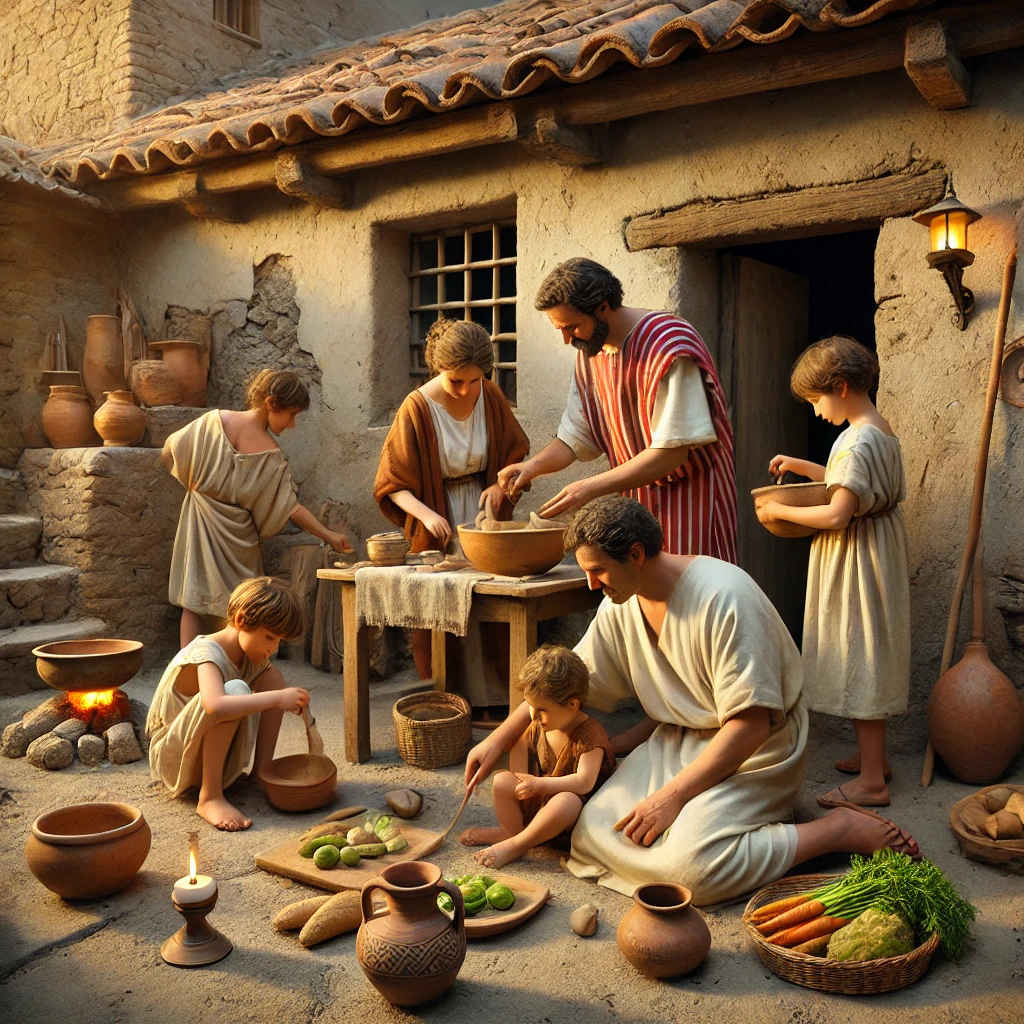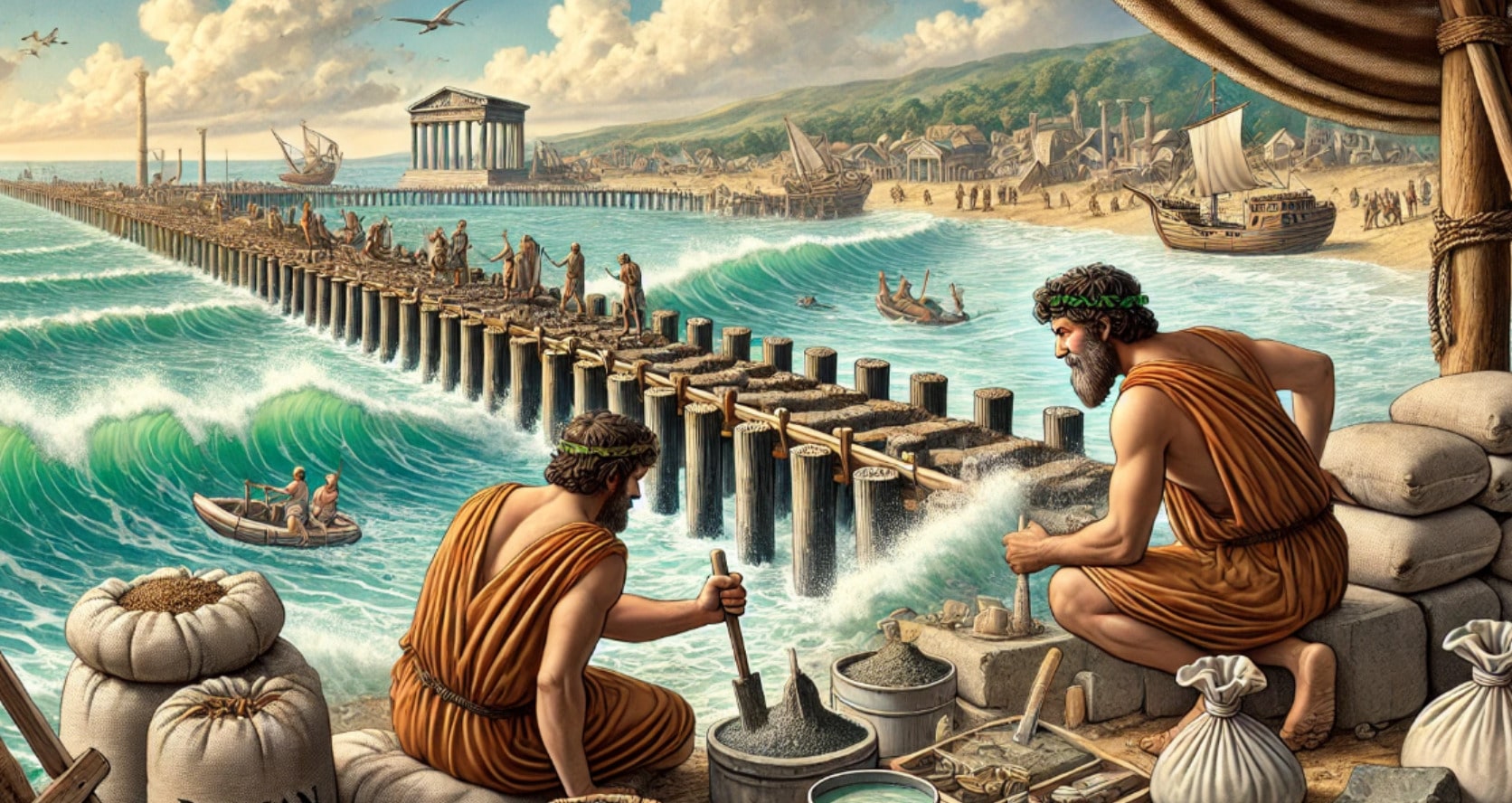You are well aware of what any family does in the afternoon on a typical day, but have you ever wondered what an ordinary family did in the Roman Empire during the afternoons?
The Roman Empire is famous for its architectural grandeur, its conquests, and its vast cultural influence, but what was life like for a common family on an average day? Afternoons in ancient Rome were a time for families to come together, share stories, and engage in activities that reflected their beliefs, aspirations, and traditions. Delving into the life of a typical Roman family allows us to better understand the spirit and values of that era.
The Rhythm of the Day in Ancient Rome
For Romans, the day began with sunrise. The streets of Rome and other cities within the empire came alive early, filled with merchants, artisans, slaves, and officials. However, the workday ended before sunset, leaving families some time to relax and reconnect. Although brief, afternoons provided an opportunity for family members to bond and strengthen ties with friends and neighbors.
An Example of a Roman Family: The Cornelius Family
To better understand life during the afternoons of ancient Rome, let’s follow the story of the Cornelius family. The Cornelius family lives in Pompeii in a modest domus, a typical single-family home of the Roman middle class. Marcus, the father, is an artisan who works in the local market selling pottery. His wife, Livia, takes care of the household and helps her husband with selling the pottery when the market is bustling. They have two children: Julia, a 12-year-old girl who is already learning household tasks, and Lucius, an 8-year-old boy full of curiosity about the world.
Welcoming Ritual: the sacrificium vespertinum
A common tradition for many families was to perform a small ritual at the end of the day. Upon returning home, Marcus and Livia light an oil lamp on the small family altar, dedicated to the lares and penates, the household gods. This ritual, known as the sacrificium vespertinum, symbolizes a moment of gratitude and spiritual connection. The lamp burns as the family gathers around the altar, and together, they offer a brief prayer. It is a way to close the workday and welcome the night, seeking protection for the home and blessings for the family.
Afternoon Activities in the Cornelius Household
After the ritual, afternoons in the Cornelius household are filled with activity and togetherness. Livia and Julia often prepare dinner, which consists of puls, a porridge made of wheat, accompanied by vegetables, and on special occasions, a piece of meat or fish if the family has had a successful day at the market. The meal is simple, but shared with joy and gratitude.
Meanwhile, Marcus and Lucius check the pottery that Marcus brought back. They clean and organize it for the next day. Lucius also helps his father polish some of the pieces, while Marcus shares stories about his own father and grandfather, who were also artisans. These stories not only entertain young Lucius but also teach him the values of dedication, hard work, and respect for ancestors.
Games and Socializing
Afternoons were also a time for Roman children to play. Julia and Lucius usually play in the courtyard, a space many Roman families used to relax. Games were simple but entertaining; one of the children’s favorites was trochlea, a hoop pushed along with a stick, challenging them to keep it rolling without letting it fall. Julia also enjoys playing with dolls, which in ancient Rome were often made of wood or terracotta.
The Cornelius family often receives visits from neighbors or friends. The adults discuss topics such as market prices, political news, or the latest military campaigns. For Romans, community life was essential. Afternoon socializing allowed families to strengthen their bonds and receive mutual support, creating a network of relationships that was vital during difficult times.
A Special Event: the Chariot Race
One particular afternoon, their neighbor Tiberius arrives with exciting news: a chariot race will take place over the weekend in the amphitheater in Pompeii. Quadrigae, or four-horse chariots, were very popular in the Roman Empire and attracted people of all ages and social classes. For the Cornelius family, this news means the chance to attend an event that breaks their routine and gives them the opportunity to enjoy the spectacle and excitement of the amphitheater.
The children are especially excited, and that same afternoon, they start playing “chariot races” in the courtyard. Lucius imagines himself as the victorious charioteer, while Julia and her friends organize small races, using stones to mark the track. These playtime moments allow children to express their imagination and connect with the culture and traditions of their time.
Dinner: A Moment of Togetherness
As night falls, the Cornelius family sits down for dinner. Although the meal is modest, dinner is a time of family unity. During the meal, Marcus often shares stories about the city, while Livia listens and smiles, sometimes recalling anecdotes from her own childhood in the countryside. Julia and Lucius also share their experiences of the day, and their parents listen with interest. This daily routine strengthens family bonds and allows each member to feel part of something greater, a community, and a culture.
Reflection: A Life Full of Meaning
Through the story of the Cornelius family, we can see how everyday life in the Roman Empire was filled with moments of gratitude, togetherness, and connection with the community. Although it was a time of uncertainty and constant effort, afternoons provided families with a space for rest and reflection. Life in ancient Rome, while seemingly simple, was woven with rituals and traditions that helped Romans find meaning and purpose in each day.
The story of the Cornelius family reminds us that, beyond the great conquests and historical events, it was the common families who truly shaped the daily life of the empire, contributing to a culture rich in traditions and values that we continue to admire today.



